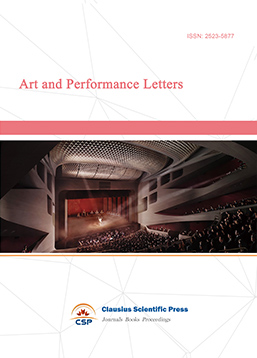Narrative Expression in Digitized Traditional Cultural Spaces: Case of the Virtual Exhibition Hall Design at Du Fu Cao Tang
DOI: 10.23977/mediacr.2024.050410 | Downloads: 162 | Views: 1421
Author(s)
Meiziling Xiao 1
Affiliation(s)
1 Sichuan Conservatory of Music, Chengdu Academy of Fine Arts, Chengdu, Sichuan, China
Corresponding Author
Meiziling XiaoABSTRACT
As digital technology advances and becomes widespread, the demand for protecting traditional cultural spaces grows. Utilizing digital narrative expressions enhances the appeal and impact of these spaces, promoting the dissemination of traditional culture. Virtual exhibition hall design can transcend time and space limitations, offering richer and more diverse display methods, thereby enhancing the audience's experiential enjoyment. This paper uses narrative expression in digital virtual spaces, both domestic and international, as the research entry point. It provides an in-depth content analysis and a systematic elaboration of the methods. The core connotation of the narrative theme is further explored, detailing the performance methods of narrative design. The constituent elements of the virtual exhibition hall's narrative structure and their interrelationships are rigorously deduced. The necessity and feasibility of spatial narratives in virtual heritage presentations are discussed, and the characteristics of these cases are summarized. Finally, the focus is on using narrative expression in digital traditional cultural spaces, exemplified by Du Fu Cao Tang. This includes developing three aspects: character construction, environment construction, and behavior construction.
KEYWORDS
Digital technology; Cultural space; Spatial narrativity; Du Fu Cao TangCITE THIS PAPER
Meiziling Xiao, Narrative Expression in Digitized Traditional Cultural Spaces: Case of the Virtual Exhibition Hall Design at Du Fu Cao Tang. Media and Communication Research (2024) Vol. 5: 69-75. DOI: http://dx.doi.org/10.23977/mediacr.2024.050410.
REFERENCES
[1] P. C. Hogan, Affective narratology: The emotional structure of stories, U of Nebraska Press, 2011.
[2] M. Caracciolo, The experientiality of narrative: An enactivist approach, Vol. 43, Walter de Gruyter GmbH & Co KG, 2014.
[3] G. Currie, Narratives and narrators: A philosophy of stories, Oxford University Press, USA, 2010.
[4] L. Bedford, The art of museum exhibitions: How story and imagination create aesthetic experiences, Routledge, 2016.
[5] L. I. Millett, H. S. Lin, J. Waldo, Engaging privacy and information technology in a digital age, National Academies Press, 2007.
[6] J. Waldfogel, Digital renaissance: what data and economics tell us about the future of popular culture, Princeton University Press. 2018.
[7] M. O. Onyesolu, F. U. Eze, Understanding virtual reality technology: advances and applications, Adv. Comput. Sci. Eng 1 (2011) 53–70.
[8] K. Kelly, The inevitable: Understanding the 12 technological forces that will shape our future, Penguin, 2016.
[9] K. Zibrek, E. Kokkinara, R. McDonnell, The effect of realistic appearance of virtual characters in immersive environments-does the character’s personality play a role?, IEEE transactions on visualization and computer graphics 24 (4) (2018) 1681–1690.
[10] H. Liu, J. Zhu, P. Ni, Y. Li, S. Li, Research on design methods for interactive spaces in schools for children with intellectual disabilities considering user needs, Buildings 14 (7) (2024) 2230.
| Downloads: | 20337 |
|---|---|
| Visits: | 472467 |
Sponsors, Associates, and Links
-
Journal of Language Testing & Assessment

-
Information and Knowledge Management

-
Military and Armament Science

-
Journal of Human Movement Science

-
Art and Performance Letters

-
Lecture Notes on History

-
Lecture Notes on Language and Literature

-
Philosophy Journal

-
Science of Law Journal

-
Journal of Political Science Research

-
Journal of Sociology and Ethnology

-
Advances in Broadcasting


 Download as PDF
Download as PDF